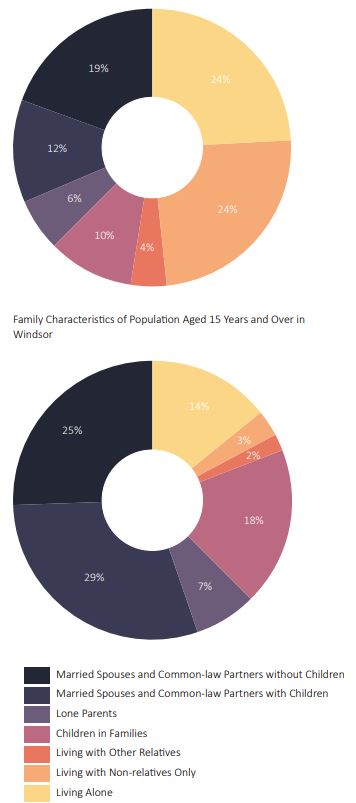Family Characteristics of Population Aged 15 Years and Over in the Study Area
Family Structure
The most common family structure in the study area is people living alone, taking up 24.5% of all living arrangements. People living with non-relatives only is a close second, making up 24.4% of living arrangements. Almost half of the population residing in the study area belongs to these top two categories. The third and fourth most common family structures are married spouses and common-law partners with children and married spouses and common-law partners without children as 19% and 12% of the population are part of these living arrangements, respectively. In contrast, over 55% of individuals in Windsor are made up of married spouses and common-law partners with children and married spouses and common-law partners without children. Additionally, as opposed to the family characteristics for the entire City, which has only 14% of people living alone, the study area contains almost twice as many people living alone. As a result, the average household size is substantially lower at 1.7 people in the study area compared to 2.1 people on average for Windsor.
Martial Status
The largest proportion of study area residents are those who have ‘never married’, followed by those who have ‘married’, ‘divorced’, ‘living common law’, ‘widowed’, and ‘separated’ in that order. When compared to the rest of the City, the study area has a significantly higher percentage of ‘single’ population (never married). While half of the population aged 15 years and over living in the study area declare that they have never been married, only 29% of all residents of Windsor remain single. On the other hand, the City as a whole consists of far more married couples than the study area. Only 24% of study area residents are married, but the married individuals of Windsor make up 48% of the entire population aged 15 years and above. The high concentration of young adults perusing post-secondary education living in the study area may be one of the factors that have led to the great difference in the proportion of ‘married’ and ‘never married’ individuals between the study area and the City as a whole.
